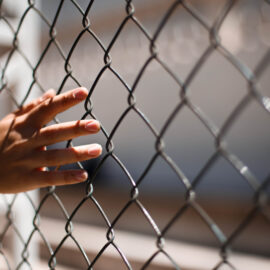

This article is an excerpt from the Shortform book guide to "Attached" by Amir Levine and Rachel Heller. Shortform has the world's best summaries and analyses of books you should be reading.
Like this article? Sign up for a free trial here .
What is the book Attached: The New Science of Adult Attachment about? How can learning about your attachment style help improve your relationships?
Attached: The New Science of Adult Attachment is based on the premise that people are biologically driven to seek intimacy and closeness with a significant other. There are three attachment styles: secure, anxious, and avoidant.
Keep reading to learn more about the adult attachment styles from Attached: The New Science of Adult Attachment.
What Is Attached About?
Many of the problems we face in our romantic relationships stem from our attachment systems, a mechanism in our brains that compels us to seek intimacy and closeness with a chosen partner—both physically and emotionally. Even though every human is wired with this urge for closeness, we respond to its pull in different ways. Some people feel the attachment urge and automatically want to resist it or suppress it. Others automatically embrace it. If two partners’ attachment responses fall on opposing ends of the spectrum, clashes are inevitable. But by understanding how attachment drives us, we can achieve less conflict and more harmony in our relationships.
Attached: The New Science of Adult Attachment is based on the premise that people are biologically driven to seek intimacy and closeness with a significant other. Our brains’ attachment systems create, monitor, and maintain our connections with the people who matter to us.
Psychologists believe this brain wiring is an evolutionary adaptation. In prehistoric times, pairs of humans had a better chance of survival than any solo human, so genetic selection favored people who “attached”—or learned how to develop close bonds with others.
The fact that human attachment is an inescapable fact of biology gives rise to our differing methods of dealing with it. Our beliefs and behaviors about intimacy fall into one of three diverse categories or “attachment styles”—secure, anxious, or avoidant.
How Attachment Styles Affect Our Relationships
Whether your attachment style is secure, anxious, or avoidant determines how you function in intimate relationships. Here’s a brief summary of each style:
- If you’re a secure attacher, you’re a nurturing, responsive, warm, and loving partner who is comfortable with intimacy.
- If you’re an anxious attacher, you’re preoccupied with making your relationship solid, and you constantly seek reassurance from your partner.
- If you’re an avoidant attacher, you’re more distant and self-reliant, and you see intimacy as a threat to your independence. You tend to keep your partner at arm’s length.
Attachment differences manifest themselves in a wide range of partnership scenarios from budget-planning to raising children to daily chores to sex. In fact, knowing someone’s attachment style is an excellent predictor of how they will behave in any partnership situation.
Every Human Has an Attachment Style
Regardless of where in the world people live, what sex they are, or what culture or religion they belong to, slightly more than 50 percent of all people are secure attachers, about 20 percent are anxious, and about 25 percent are avoidant. The remaining 5 percent are combined anxious-avoidants.
In this summary, we explain how to determine your own attachment style as well as the attachment styles of your long-term partners or people you’re just starting to date. We show how attachment needs affect your ability to thrive, and why only some people will be able to meet your specific emotional needs.
Most importantly, you’ll learn how to adopt the behaviors and beliefs of the secure attachment style and use them to make your relationships more fulfilling.
Dependency Doesn’t Mean Weakness
Although research into attachment styles is still evolving, we know that the desire for attachment is wired into us. Like it or not, our romantic partners have a huge impact on our ability to thrive in the world. They affect how we feel about ourselves and how much we believe in our own abilities.
Partners who satisfy our basic attachment needs—our deep-seated desires for security, comfort, and love—unwittingly give us the courage to go out into the world and thrive. Partners who don’t satisfy these needs may stunt our ability to achieve our goals. They may even have a negative effect on our health.
The Dependency Paradox
It may seem like a paradox, but depending on another person will actually make you more independent, bold, and brave. According to attachment theory, when our emotional needs are nourished, we have no reason to be needy or anxious. In fact, we become much more daring.
This idea—that people become braver by depending on others—contradicts what most of us learn as we grow up. We are taught that we should strive for self-reliance. Self-help books and psychology blogs are full of advice on how to be more emotionally independent. We are told to focus on our own happiness, to set clear boundaries with our partners, and to look after ourselves first and foremost.
rain research reveals a different story. When we’re in a relationship, our brains are wired to crave our partner’s emotional support as well as their physical closeness. If our partner fails to deliver that support, our brains instruct us to pursue it at all costs—request it, demand it, even throw a temper tantrum if necessary. When we still don’t get the emotional nourishment we need, arguments erupt, and the relationship sustains damage.
The Origins of Attachment Theory
The Western belief that we should be emotionally self-sufficient has its roots in 20th-century parenting books, which warned against coddling children or smothering them with too much love. As far back as the 1920s, experts warned parents that if they wanted their children to grow up self-reliant and fearless, they should dole out affection sparingly.
The tide turned in the 1960s when psychologists Mary Ainsworth and John Bowlby published studies that proved the importance of parent-child bonding. By studying infants raised in orphanages and institutions, they showed that babies and young children are not attached to their parents just for food and shelter. According to their research, children raised with adequate food and shelter—but without a parent or an attachment figure——had a much higher chance of stunted physical, emotional, and intellectual development.
Credited as the founders of attachment theory, Ainsworth and Bowlby also insisted that humans have attachment needs throughout their entire lives, not just as children. Later research has continued to support this idea, with a slight twist: Unlike babies, adults benefit from having a supportive, nurturing relationship even when their “supporter” isn’t physically available to them. Adults can thrive with just the knowledge that someone is there for them psychologically and emotionally.
Decoding Your Own Attachment Style
Once you understand your attachment style, you’ll have a better understanding of the way you interact in romantic relationships. Consider which of the following styles best fits you:
Key Features of the Secure Attachment Style
- You’re naturally loving and warm.
- You enjoy intimacy and closeness.
- You don’t worry much about your relationships—you take the ups and downs in stride.
- You can easily communicate with your partner about your desires and needs.
- You’re able to anticipate your partner’s desires and needs, and you enjoy responding to them.
- You enjoy sharing life’s successes and failures with your partner.
Key Features of the Anxious Attachment Style
- You love intimacy and closeness.
- Relationships are a big part of your life and take up a lot of your emotional energy.
- You often fear that your partner doesn’t love being close as much as you do.
- You’re extremely sensitive to changes in your partner’s moods or behaviors.
- You’re hesitant to say anything that your partner might find disagreeable.
Key Features of the Avoidant Attachment Style
- You prefer independence and autonomy over intimacy and closeness.
- You tend to keep people at arm’s length.
- You don’t worry about your relationships; rejection doesn’t bother you much.
- You don’t usually talk to your partner about your feelings.
- You’re concerned about your partner interfering in your life too much or stepping on your territory.
Decoding Your Partner’s Attachment Style
Whether you’re starting out in a new relationship or struggling to find harmony in a decades-long marriage, understanding your partner’s beliefs and attitudes about intimacy can save you a lot of emotional struggle.
Maybe you’re on your third date and you’re wondering whether this new relationship holds promise for a sustainable future. Once you get an accurate picture of this new person’s capacity for intimacy, you’ll stop wondering, “Does he or she really like me?” and start asking a more important question: “Is this person able to give me the emotional support I need?” Because if the answer to the second question is no, the answer to the first is irrelevant.
Or perhaps you and your long-term partner have never succeeded in finding a peaceful equilibrium, but you can’t figure out why. By determining your partner’s attachment style—and knowing your own—you’ll finally understand what lies at the root of your conflicts.
Determining another person’s attachment style is slightly more difficult than determining your own. But while you may not know everything your partner feels and thinks, you do have intimate experience with their everyday actions and words—and those are telling.

———End of Preview———
Like what you just read? Read the rest of the world's best book summary and analysis of Amir Levine and Rachel Heller's "Attached" at Shortform .
Here's what you'll find in our full Attached summary :
- Why your partner behaves the way they do
- How your attachment style affects your relationship
- How to distance yourself from unhealthy relationships






